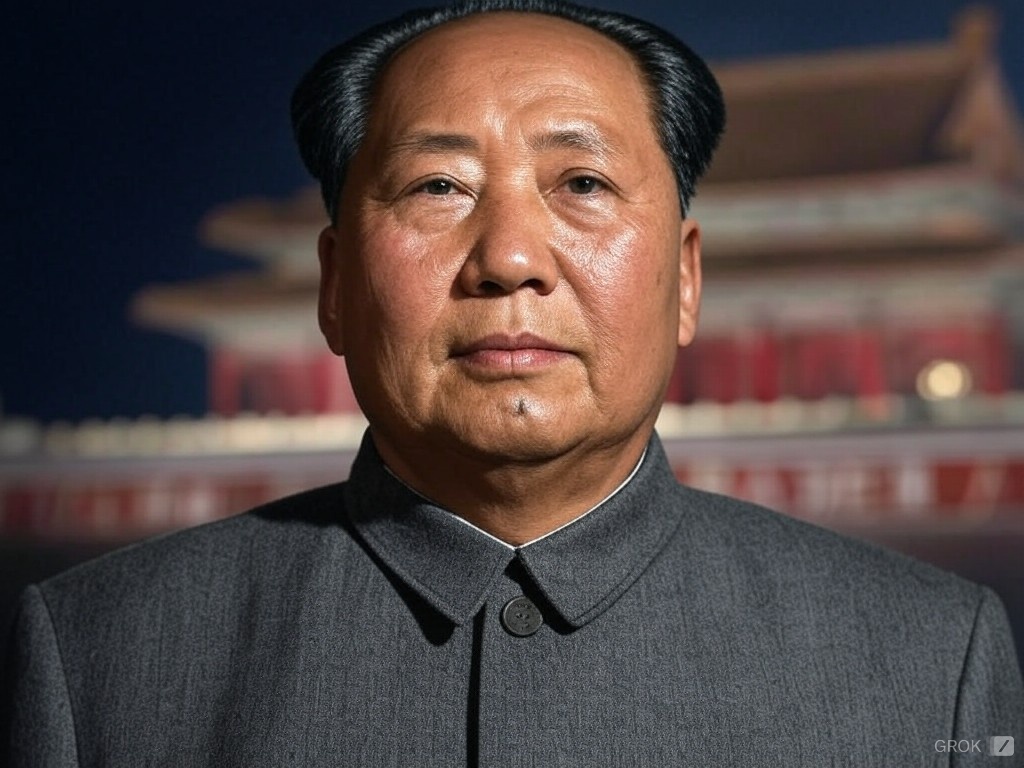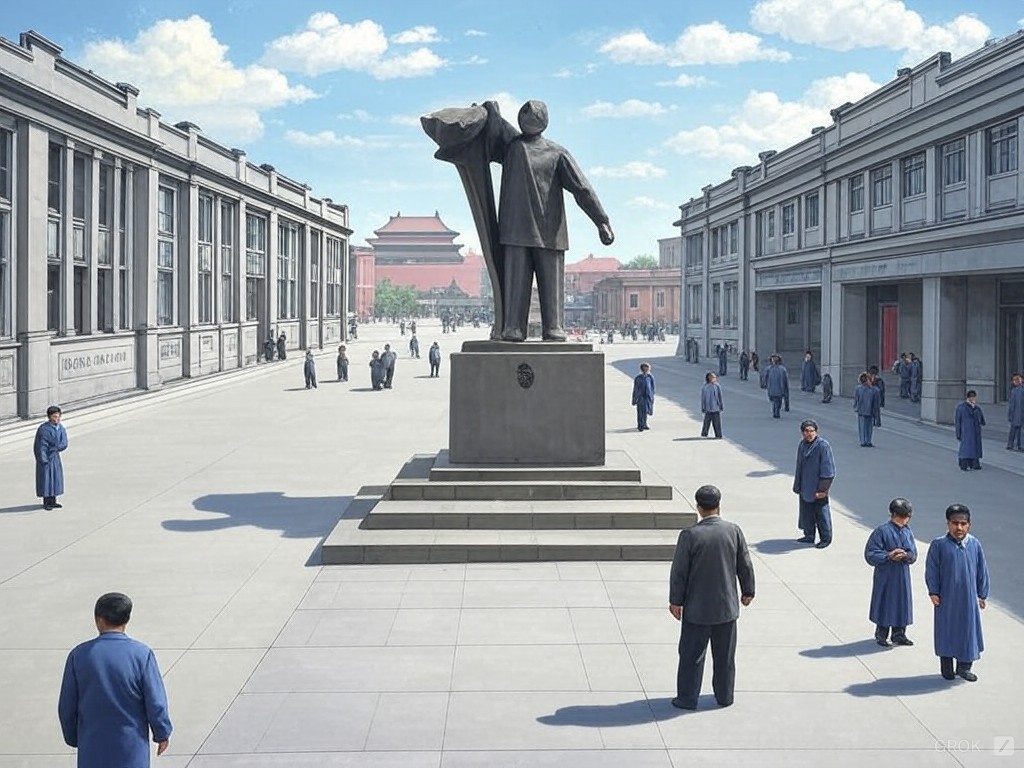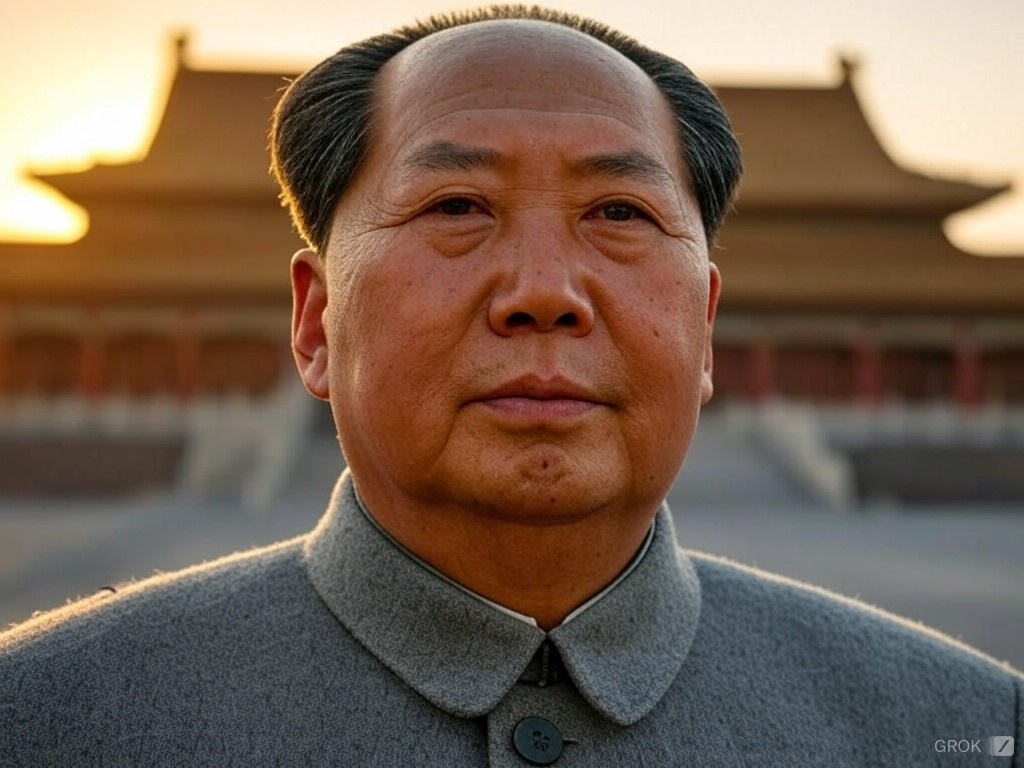Great Leap Forward: A Tragic Misstep or Bold Experiment?
Mao Zedong’s Great Leap Forward (1958–1962) stands as one of the most ambitious and controversial chapters in the history of revolutionary socialism. The campaign sought to propel China into a modern, industrialized society by mobilizing its vast population and bypassing the gradualist methods of traditional economic development. However, the bold experiment led to widespread famine, economic disarray, and the deaths of millions. Despite its devastating human cost, Mao’s Great Leap Forward offers valuable lessons about the intersection of ideology, governance, and the pursuit of revolutionary transformation.
As a Marxist-Leninist, I recognize the vision behind the Great Leap Forward as deeply rooted in the principles of collective action, self-reliance, and the desire to eliminate class disparities. Yet, the campaign’s catastrophic failures also underscore the dangers of overreach, mismanagement, and the suppression of dissent. In this analysis, I will explore the Great Leap Forward’s objectives, its implementation, its consequences, and the lessons it provides for contemporary revolutionary movements.
The Vision Behind the Great Leap Forward
The Great Leap Forward was Mao’s answer to a pressing question: how could China achieve rapid modernization and establish itself as a socialist superpower in the face of limited resources and persistent inequality? Traditional Marxist theory emphasized the importance of industrialization as a prerequisite for socialism, but China’s predominantly agrarian economy posed unique challenges. Mao sought to leapfrog these obstacles by mobilizing the energy and enthusiasm of the masses to simultaneously boost agricultural and industrial production.
At the heart of the Great Leap Forward was the principle of collectivization. Mao believed that by consolidating individual farms into large, communal operations—known as People’s Communes—China could achieve economies of scale and free up labor for industrial projects. These communes were not only economic units but also social and political organizations, designed to instill collective values and eliminate the vestiges of feudalism and individualism.
Another cornerstone of the campaign was the development of small-scale, decentralized industries, particularly in rural areas. Mao famously promoted the construction of backyard steel furnaces, envisioning a scenario in which every village contributed to the national industrial output. This approach reflected Mao’s commitment to self-reliance and his rejection of the Soviet model of centralized, urban-focused industrialization.
Implementation: Mobilizing the Masses
The implementation of the Great Leap Forward relied heavily on mass mobilization. Mao and the Chinese Communist Party (CCP) framed the campaign as a patriotic duty, urging citizens to embrace hard work, sacrifice, and collective effort for the greater good. Propaganda campaigns extolled the virtues of communal living and celebrated the achievements of model communes, fostering a sense of optimism and urgency.
However, the emphasis on speed and enthusiasm often came at the expense of practicality and oversight. Local officials, eager to meet or exceed production quotas, exaggerated their achievements and imposed unrealistic demands on the peasantry. Reports of record-breaking grain harvests led to inflated state procurement targets, leaving rural communities with insufficient food supplies. The drive for rapid industrialization also diverted labor and resources away from agriculture, exacerbating the food shortages.
The Consequences: Triumphs and Tragedies
The most infamous consequence of the Great Leap Forward was the famine that claimed tens of millions of lives, making it one of the deadliest human-made disasters in history. The causes of the famine were multifaceted, involving a combination of environmental factors, policy mismanagement, and the suppression of dissent. Poor agricultural techniques, overambitious grain procurement policies, and the prioritization of industrial projects over food production created a perfect storm of scarcity and suffering.
The famine revealed critical flaws in the CCP’s governance during this period. The emphasis on ideological conformity and loyalty to Mao discouraged honest reporting and critical feedback, leading to a disconnect between the party leadership and the realities on the ground. Local officials, fearing punishment for failure, often concealed the true extent of the crisis, delaying corrective action and compounding the disaster.
Despite these devastating consequences, the Great Leap Forward was not without its achievements. The campaign succeeded in expanding rural infrastructure, such as irrigation systems and transportation networks, which laid the groundwork for future development. It also fostered a sense of collective identity and solidarity among the Chinese people, reinforcing the values of socialism even in the face of adversity.
The Philosophy of the Great Leap Forward
The Great Leap Forward was deeply influenced by Mao’s philosophy of continuous revolution and his belief in the creative potential of the masses. For Mao, the success of socialism depended not on top-down directives from technocrats but on the active participation and initiative of ordinary people. This philosophy was encapsulated in his famous dictum: “The people, and the people alone, are the motive force in the making of world history.”
Mao’s emphasis on mass mobilization reflected his distrust of bureaucratic elites and his desire to prevent the ossification of the revolutionary spirit. By involving the masses directly in economic and social transformation, Mao sought to empower them and ensure that the revolution remained dynamic and participatory.
However, the campaign also revealed the limitations of this approach. While Mao’s faith in the masses was admirable, it often led to unrealistic expectations and a disregard for technical expertise. The lack of coordination between central planning and local implementation created inefficiencies and inconsistencies that undermined the campaign’s objectives.
The Role of Ideology in Shaping Outcomes
The Great Leap Forward underscores the dual-edged nature of ideology in revolutionary governance. On one hand, Mao’s vision of a self-reliant, egalitarian society inspired millions and galvanized unprecedented levels of collective effort. On the other hand, the rigid application of ideological principles sometimes blinded the CCP to practical realities and alternative approaches.
For example, Mao’s insistence on achieving communism “in one leap” led to the premature dismantling of traditional farming practices and the imposition of experimental techniques that often proved ineffective. The campaign’s focus on ideological purity also created a climate of fear and conformity, discouraging dissent and critical debate. These shortcomings highlight the need for revolutionary movements to balance ideological commitment with flexibility and pragmatism.
The Global Context: Competing with the Soviet Model
The Great Leap Forward must also be understood in the context of China’s strained relationship with the Soviet Union. By the late 1950s, Mao had grown increasingly critical of Soviet “revisionism,” accusing the USSR of abandoning revolutionary principles in favor of bureaucratic centralization and coexistence with capitalist powers. The Great Leap Forward was, in part, an attempt to demonstrate the superiority of Maoist socialism over the Soviet model.
This ideological competition had significant implications for the campaign’s design and implementation. Mao’s rejection of Soviet-style industrialization led him to prioritize decentralized, small-scale production methods, which he believed were better suited to China’s conditions. While this approach was innovative, it also posed logistical challenges and contributed to the inefficiencies that plagued the campaign.
Lessons from the Great Leap Forward
The Great Leap Forward offers valuable lessons for contemporary revolutionaries and policymakers. First and foremost, it highlights the importance of aligning revolutionary ambition with practical realities. While bold experiments and visionary goals are essential for transformative change, they must be grounded in careful planning, technical expertise, and an honest assessment of resources and constraints.
Second, the campaign underscores the dangers of suppressing dissent and centralizing power in the hands of a single leader. Revolutionary movements thrive on open debate, critical feedback, and collective decision-making. By stifling these processes, the CCP undermined its ability to identify and address problems during the Great Leap Forward.
Third, the campaign illustrates the potential and pitfalls of mass mobilization. Mao’s ability to inspire and organize the masses was a testament to his leadership and the appeal of socialist ideals. However, the lack of clear guidelines and oversight often led to mismanagement and unintended consequences. Revolutionary movements must strike a balance between empowering the masses and maintaining organizational discipline.
The Legacy of the Great Leap Forward
Despite its catastrophic failures, the Great Leap Forward remains a defining moment in the history of Chinese socialism. It exemplifies both the promise and the perils of revolutionary transformation, offering lessons that continue to resonate with activists, scholars, and policymakers around the world.
For supporters of Maoist thought, the campaign serves as a reminder of the need to adapt Marxist principles to local conditions and to prioritize the needs of the people over technocratic efficiency. For critics, it underscores the importance of accountability, transparency, and the integration of expertise into revolutionary governance.
Above all, the Great Leap Forward challenges us to confront the complexities of social and economic transformation. It asks us to grapple with the tension between idealism and pragmatism, between ambition and caution, and between collective goals and individual realities. These tensions are not unique to the Great Leap Forward; they are inherent in all efforts to build a more just and equitable society.
Conclusion
The Great Leap Forward was a bold and visionary experiment that sought to redefine the boundaries of possibility in the pursuit of socialism. While its failures were profound and its consequences tragic, its underlying principles of collectivism, self-reliance, and mass mobilization remain relevant to contemporary struggles for social justice.
As we reflect on the Great Leap Forward, we must strive to learn from its successes and failures, embracing its lessons with humility and determination. By doing so, we can honor the sacrifices of those who participated in the campaign and carry forward the spirit of revolutionary transformation into the challenges of the present and future. Mao’s Great Leap Forward, though flawed, remains a testament to the enduring power of human aspiration and the complexities of building a new world.
Originally posted 2024-08-22 16:28:50.



